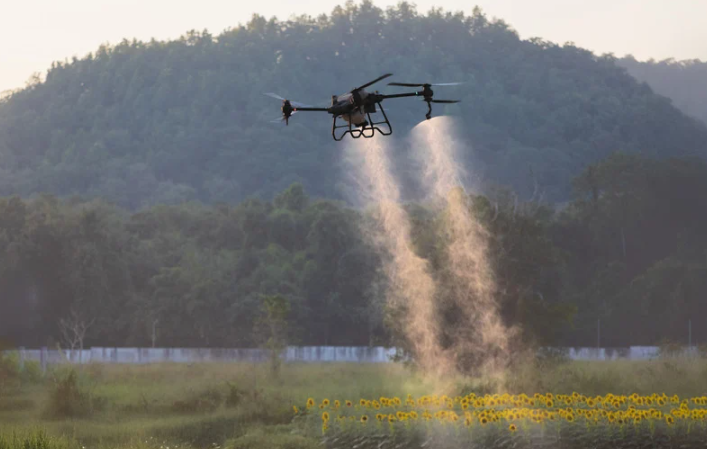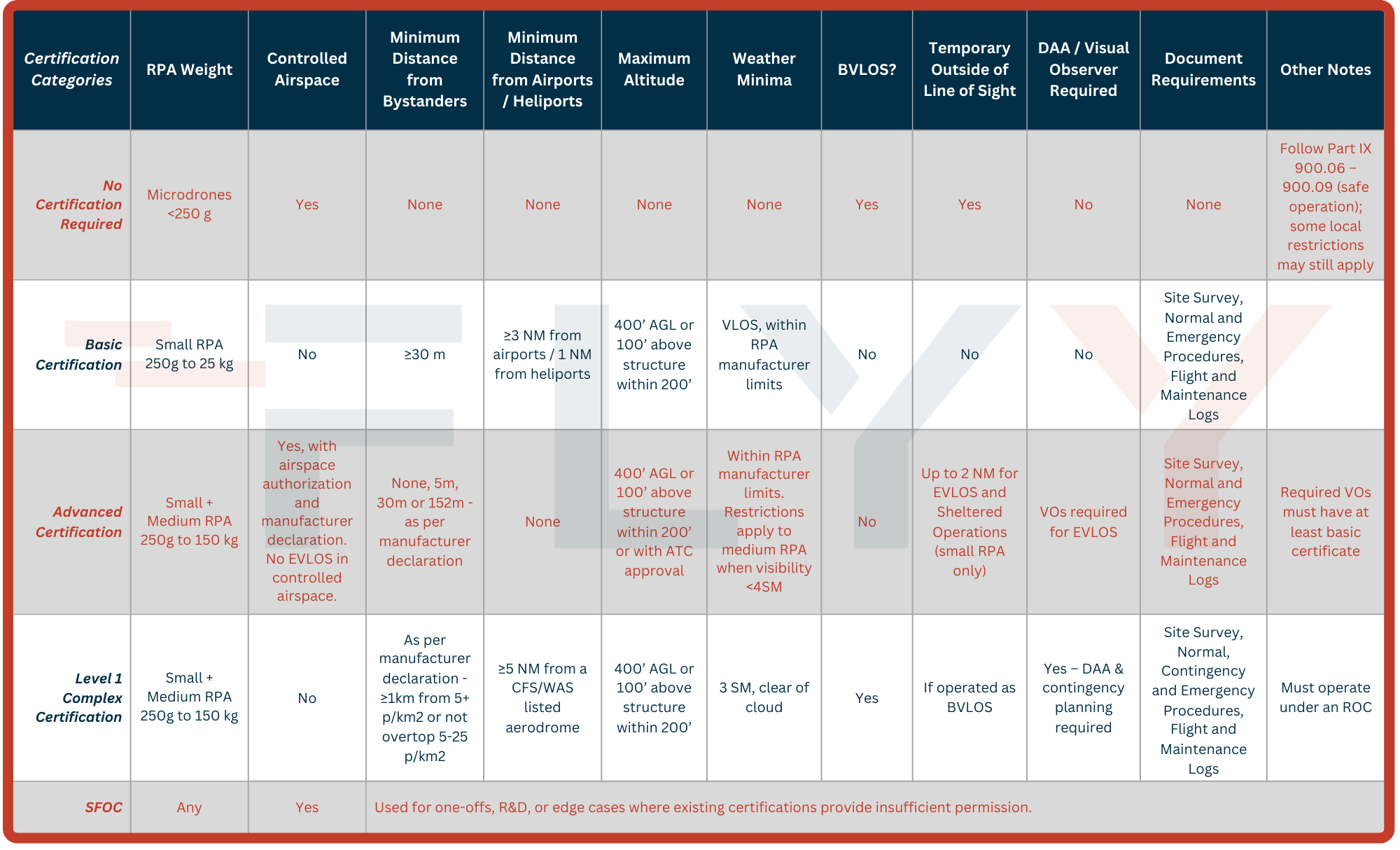
The incoming Transport Canada RPAS regulations are a big deal. Most of the industry buzz has been around opening the door to routine, low-risk BVLOS flights once you’ve obtained your Level 1 Complex certificate. But there’s much more to it than that!
How do these new Level 1 Complex permissions fit into the broader certification framework? What are the new boundaries of possible routine operations and how do the new advanced permissions fit into that too? We’ve framed it all out for you in a table here and distilled some key take aways in the comments that follow.
Canadian RPAS Certification Summary Table

Note: This table is intended as a summary. Please refer to the CARs for full descriptions of requirements and capabilities for each certification.
RPAS Operating Certificates
Before anything else, it’s worth noting that having your Level 1 Complex (congrats, by the way!) isn’t enough for you to start popping up drones on low-risk BVLOS flights. TC requires that you be operating under an RPOC – an RPAS Operator Certificate. You can obtain your RPOC through the Drone Management Portal in just a few minutes, but that simple application has some pretty significant implications. When you take on that responsibility, you become the accountable executive for the operations – regardless of the size of the company. You are effectively responsible for ensuring that all regulations, SOPs and best practices are followed to the letter. And, in the event something really goes south, you’ll be the person Transport Canada holds accountable. So remember: The RPOC is serious business, and whoever signs on the dotted line is taking on significant responsibility. It’s an important document with significant legal implications.
Detect and Avoid
With you or your company holding an RPOC, you’re ready for action – or almost ready. If you’re carrying out a routine, low-risk BVLOS mission, you’ll also need some sort of Detect and Avoid (DAA) technology on board or on the ground. Bear in mind that your DAA system will likely have its own operating parameters which might include temperature, visibility, distance limits, etc. What’s important to remember here is that the operating conditions for your specific DAA system (and aircraft!) must be met, even if they are more strict than those outlined in CARs.
Distances from Bystanders
If you’re flying a routine, low-risk BVLOS flight with your L1C, you won’t need a Special Flight Operations Certificate as of November 4, 2025. But you will have to ensure your operations are taking place over an area that’s sparsely populated (fewer than five people per square kilometre), unless the manufacturer has made a declaration with TC. However, that doesn’t mean you can ignore existing regulations when it comes to distance from bystanders. If you’re VLOS for takeoff and landing and can see bystanders, you’re still subject to the 100’ lateral separation for small drones up to 25kg, and 500’ separation for medium drones (25kg to 150kg), unless the manufacturer has declared they’re safe to fly closer. While we’re here, a reminder that those holding an Advanced RPAS certificate will be able to operate those medium drones too, though restricted to VLOS operations only.
Advanced Pilots
With an Advanced certificate, the new regulations open up Extended Visual Line of Sight, or EVLOS. You’ll be permitted to fly up to two nautical miles for the pilot, control station and Visual Observer during the flight – as long as the pilot and control station are at the take-off and launch location and a VO is monitoring the airspace for conflicts. Sheltered operations are possible too, meaning you can fly around a building or structure without the use of a VO. You can think of it as super-brief-strict-parameters-low-low-risk BVLOS flight (baby BVLOS is my term and I absolutely do not have TC approval to phrase it that way), but you need to use common sense and make sure you can do it safely.
Microdrones
You might be looking at this table and thinking, “Wow, that micro drone category is looking pretty appealing right now!” And you wouldn’t be wrong. These sub-250g drones are impressively capable for their size, especially for photo and video work. But it’s important to recognize their limitations and the responsibilities that still come with operating them. While you don’t need a certificate to fly a micro drone, as a professional operator understanding the current regulations and applying good judgment is critical. Certification isn’t just about ticking boxes. It enhances your professionalism, and can be a requirement for insurance coverage which is often something clients expect before allowing you to operate on their property. And while micro drones might feel like a bit of a regulatory free-for-all, they’re not. For example, an SFOC is now required to operate micro drones at advertised events, and it’s not just the “don’t be an idiot” rule (CAR 900.06) anymore – there are a few more for you to follow that require you to understand NOTAM and Class F airspace.
Bottom line: They’re a great tool, but safety first. If there’s an incident you’re still accountable for any decisions you made.
This is probably a good time to remind pilots that micro-drones, despite their weight and size, are still not entirely benign. A Canadian water bomber assisting with the LA fires struck a sub-250g drone and damage to the leading edge of the wing was incurred. The aircraft had to be grounded until replacement parts arrived.
Basic Pilots
Honestly, not much is changing for you. Those same 900 CARs mentioned under microdrones apply to you too, as they do all RPA, but there are no new permissions or privilege changes incoming. You can act as a VO for EVLOS operations though!
